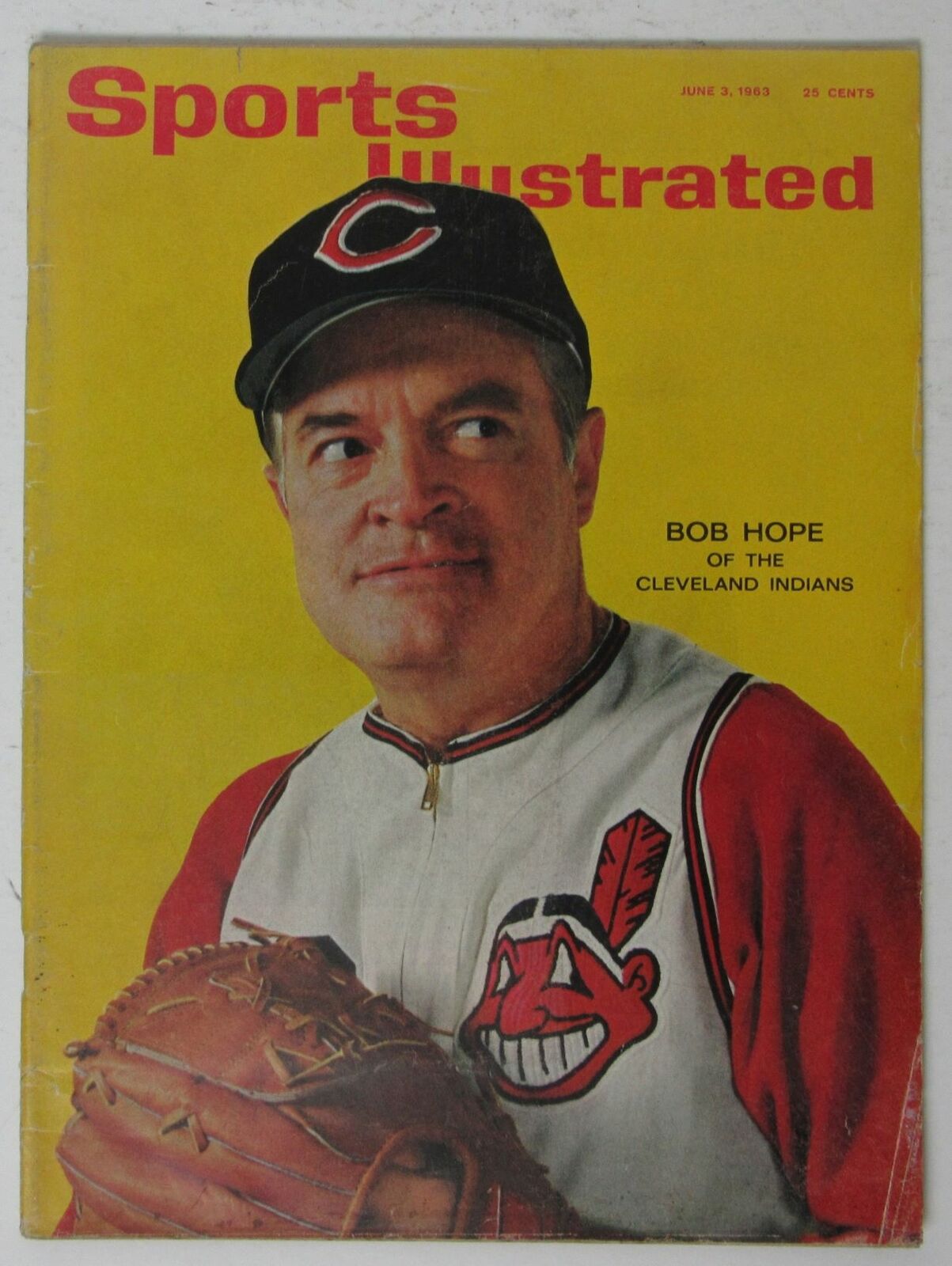Bob Hope was raised in The Forest City from the age of five, in 1908, until his early 20s. He frequently canvassed the city in his youth, where he would often ride the trolley from his neighborhood in Doan’s Corner over to Luna Park, an amusement park. It was here where Hope would impersonate Charlie Chaplin, sing, and engage in footraces in order to win some pocket change.
Hope also hustled pool at the Alhambra pool hall, taught ballroom dancing, and boxed (under the name of “Packy East”) in his time in Cleveland before hitting the vaudeville circuit. It was during these formative years in his life that Hope fell in love with baseball, specifically the hometown team the Indians, and their player-manager Tris Speaker.
By the 1940s, Hope was a big star in Hollywood, appearing in the “Road” movie series with Dorothy Lamour and Bing Crosby. In 1946, Crosby took some of his earnings and bought a stake in the Pittsburgh Pirates. Hope was interested in doing the same.
That same year Bill Veeck Jr. noticed that the ownership of the Cleveland Indians was up for grabs. Veeck put together a group of investors, which included Hope. Veeck then swooped in and bought the team from the current owners, including team president Alva Bradley, for $2.2 million dollars (approximately $33 million adjusted for inflation).
“My interest in the deal was purely sentimental, as I am a former resident of Cleveland. Of course, I have no interest — ahem — in any money we might make out of the club.”
– Bob Hope, 1946
In 1947, Hope and Crosby performed a comedy bit during Spring Training, which had just moved from Clearwater, Florida to Tuscon, Arizona. Paramount News added this to one of their newsreels that played in front of movies. It was called “Baseball’s Bustin’ Out All Over”. In this newsreel, Hope and Crosby wear the respective uniforms of their teams and are shown tossing a baseball and joking around.
Also that year, Veeck signed Larry Doby to play Centerfield for the Indians. Doby, whose debut was on July 5, 1947, was the first African American player to play in the American League. This was following the National League’s debut of Jackie Robinson for the Brooklyn Dodgers by 3 months.
This was a mission for Veeck who, in 1942, was blocked by baseball commissioner Kenesaw Mountain Landis from purchasing the Philadelphia Phillies because he wanted to desegregate baseball. The Indians would go on to win the World Series for the second and final time the following year. These historic moments would be the highlights of Bob Hope’s tenure as an owner of the team.
“Bob (Hope) was a very good golfer, but he was also interested in the baseball team.”
– Bob Feller, Hall of Fame Pitcher
In 1956, Hope made a guest appearance on I Love Lucy where he played himself. In the sixth season episode, Lucy, the Mertzes, and Little Ricky are attending a New York Yankees/Cleveland Indians game at Yankee Stadium. Bob Hope is also in attendance. Lucy impersonates an Indians player, Bob Feller, in order to get Hope to perform at her husband Rickey’s club. The episode culminates with Rickey, Lucy, and Hope performing the song “Nobody Loves The Ump” at Rickey’s Club.
In 1963, Hope appeared on the cover of Sport’s Illustrated dressed in full Cleveland Indians regalia. The article’s writer, Jack Olsen stated in the piece:
“He is the kind of sports nut who will interrupt a visit to New Orleans to fly to Cincinnati to play a round of golf with some cronies. He’s been a fighter, a sprinter, a pool hustler, a four-handicap golfer, a professional football team’s mascot and a holder of substantial shares of stock in enterprises such as the Los Angeles Rams and the Cleveland Indians. He seldom misses a big fight, even if he has to rush over to the Pantages Theater in Hollywood to see it on theater TV. He has played something between 1,000 and 1,500 golf courses, in such varied places as Brazil and Greenland, in company with anteaters, monkeys and, sometimes, Presidents.”
Bob Hope held an ownership stake in the Indians for over 40 years. On October 3, 1993, Bob Hope traveled to Cleveland and sang his trademark song “Thanks for the Memories” at the final game played in Cleveland’s Municipal Stadium. The game was between the Indians and the Chicago White Sox. Hope was 90 years old, but still a kid at heart.
On July 23, 2021, the Cleveland Indians announced that they would change their name to the Cleveland Guardians at the end of the 2021 season. The new name was inspired by the “Guardians of Traffic” statues located on the Hope Memorial Bridge in downtown Cleveland. Originally called the Lorain-Carnegie Bridge, the name was changed in 1983 as a tribute to both Bob Hope and his father, William Henry, who was a stonemason that helped to construct the Guardian statues. With this new name, Bob Hope’s connection to the baseball team he loved, and its legacy, will continue for years to come.
